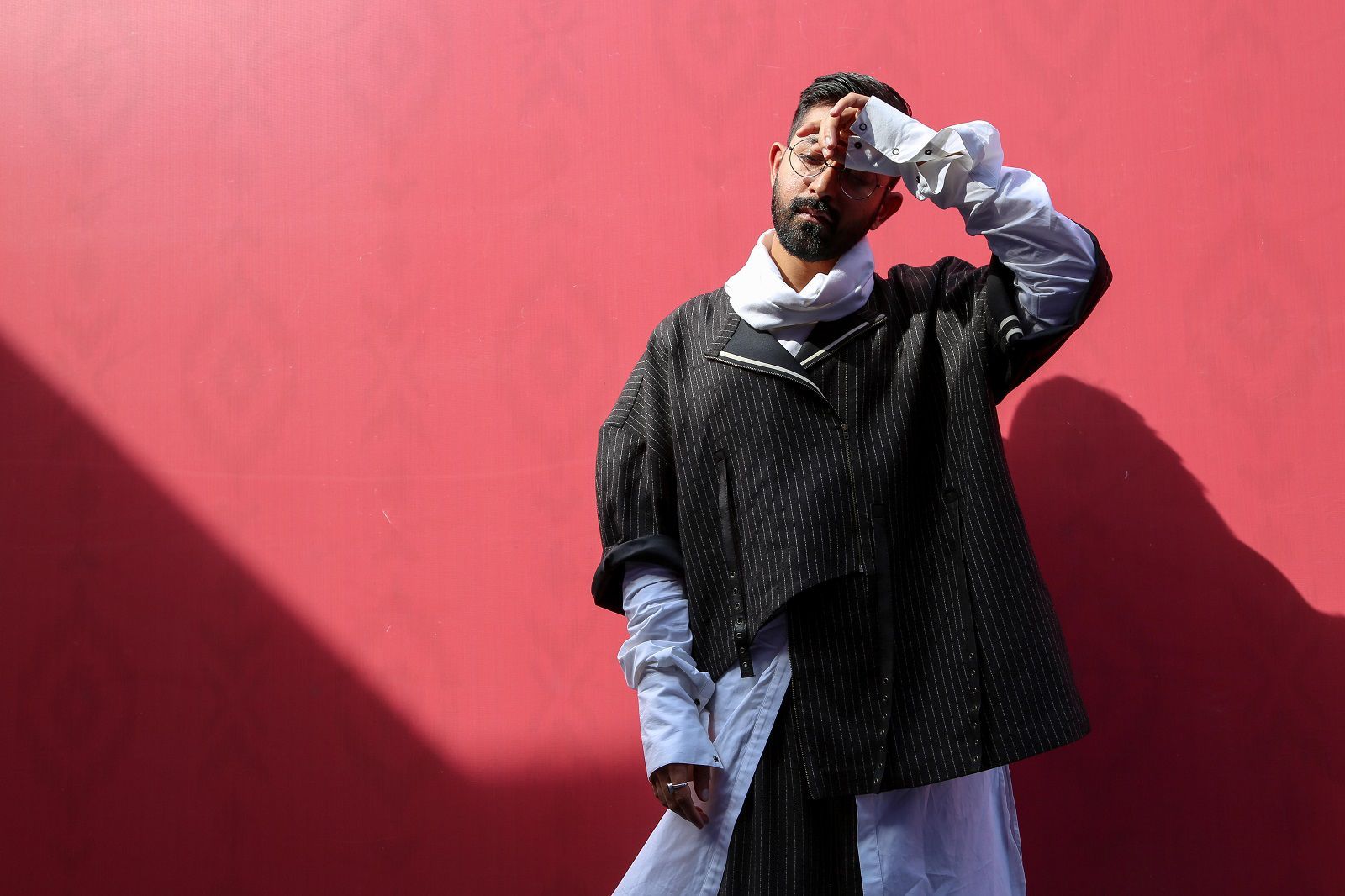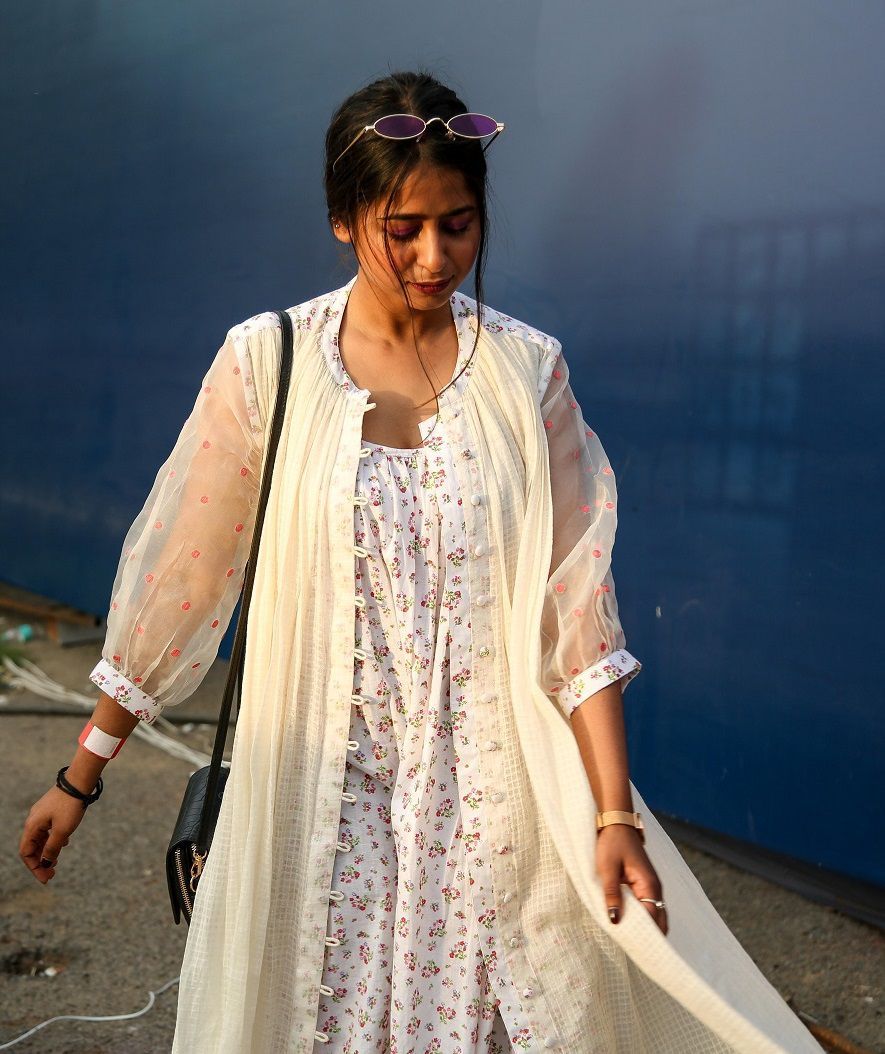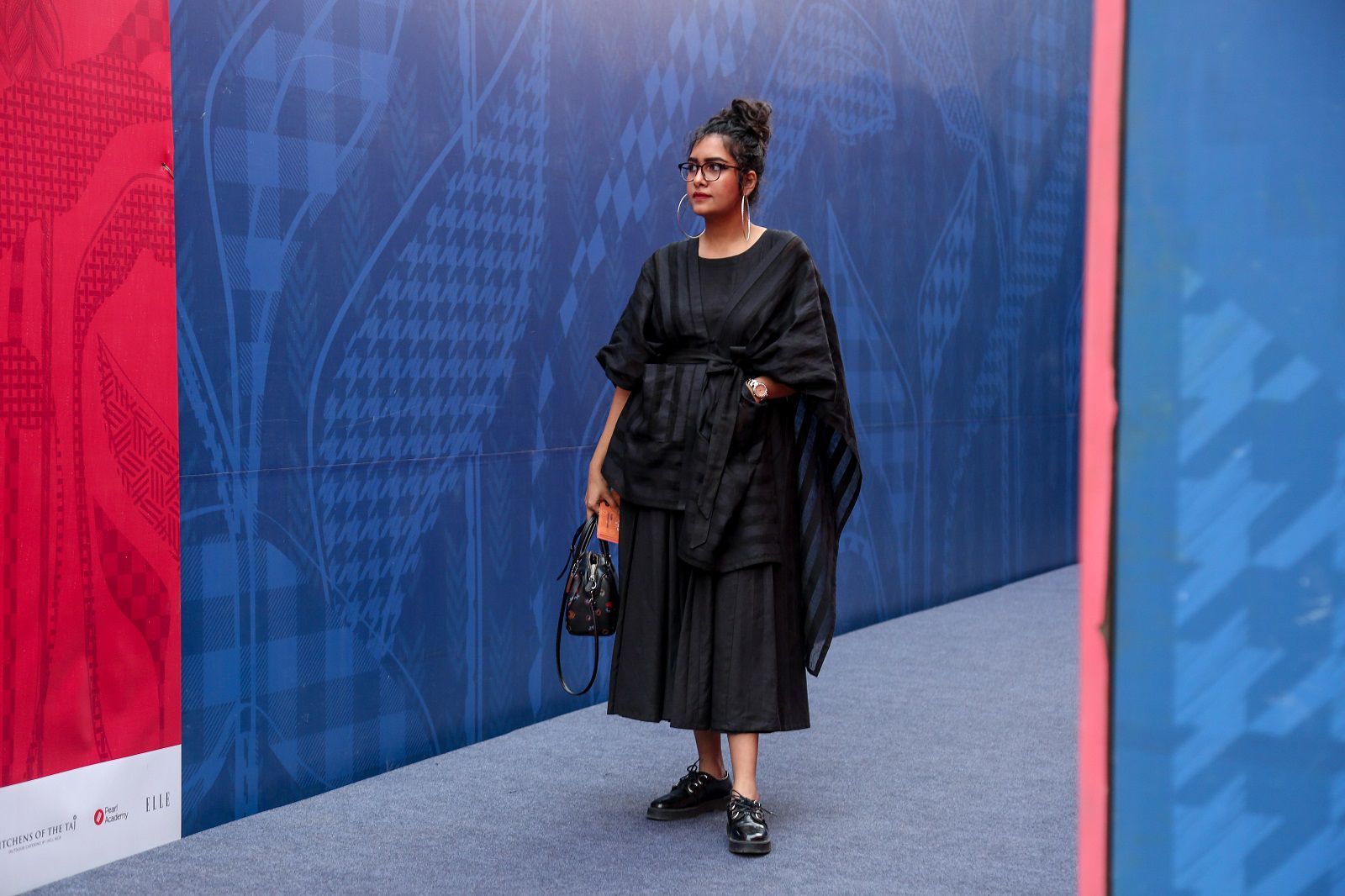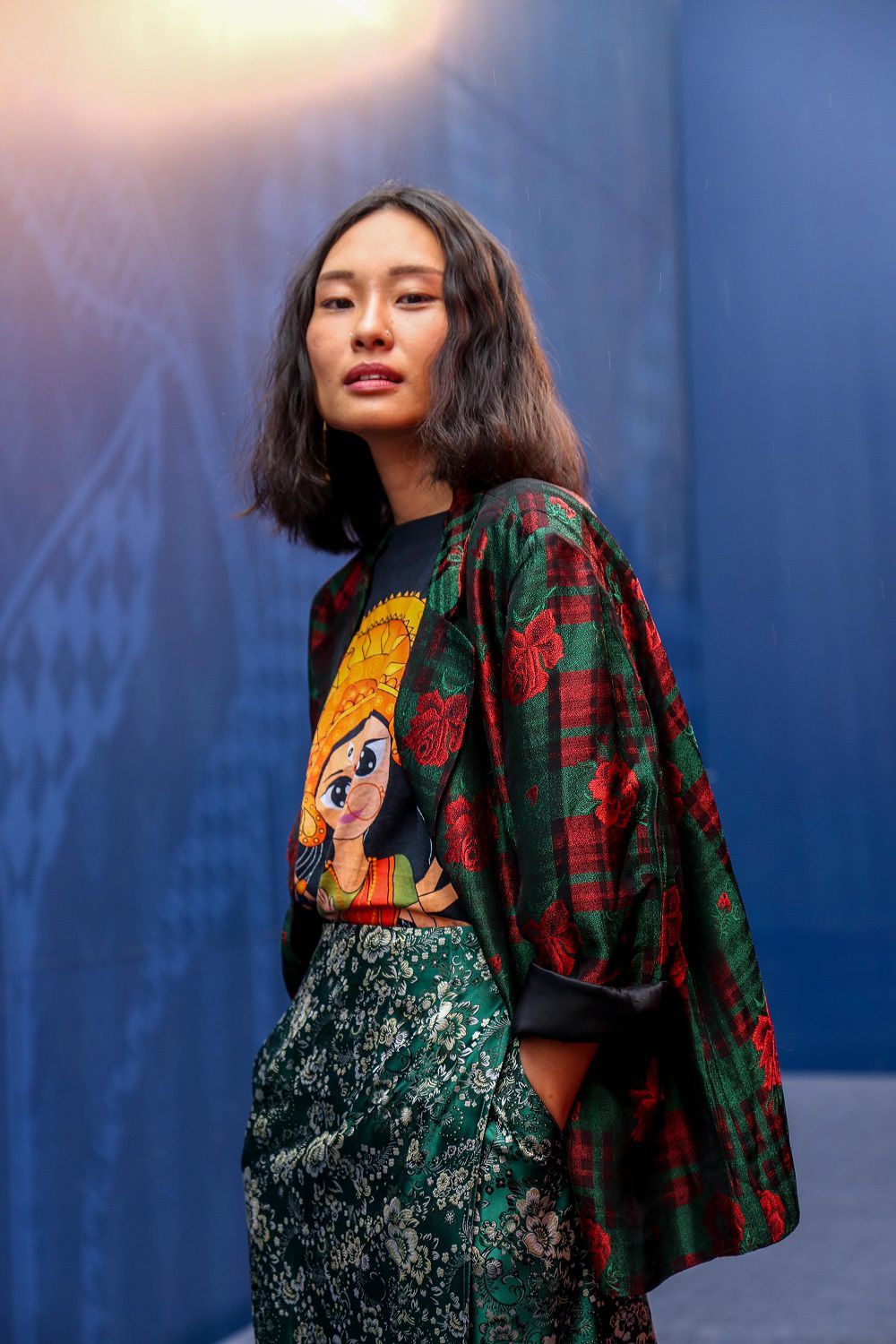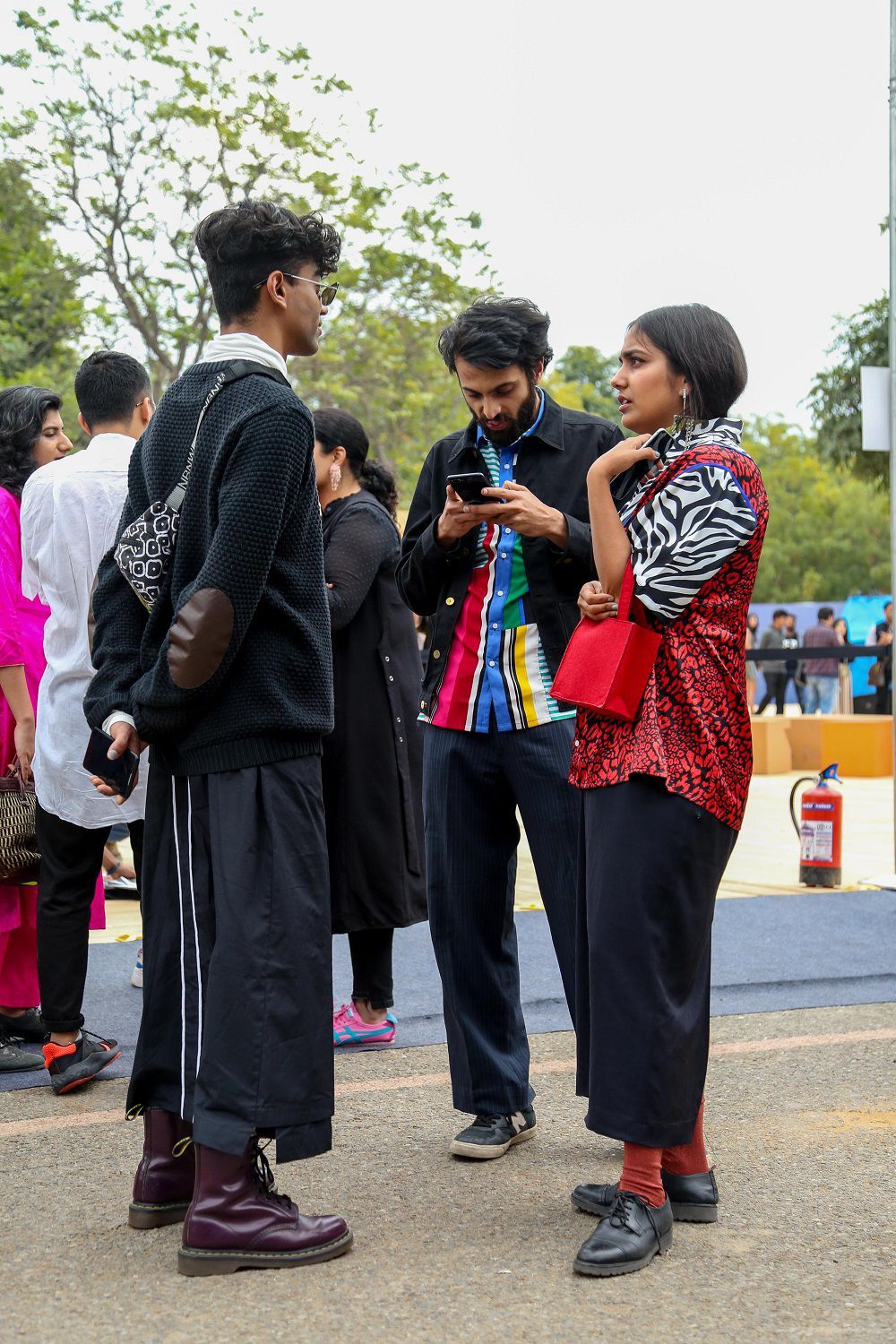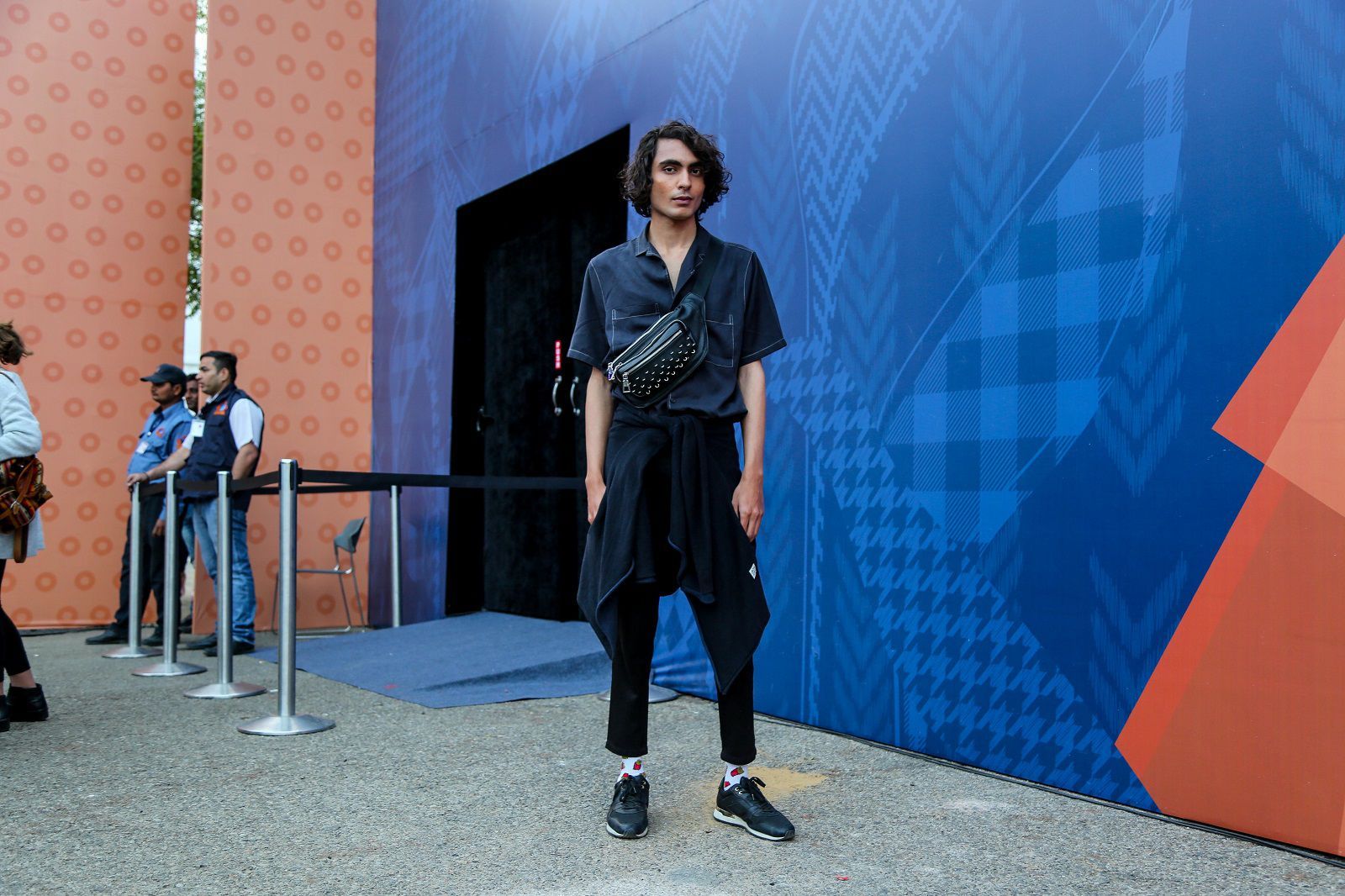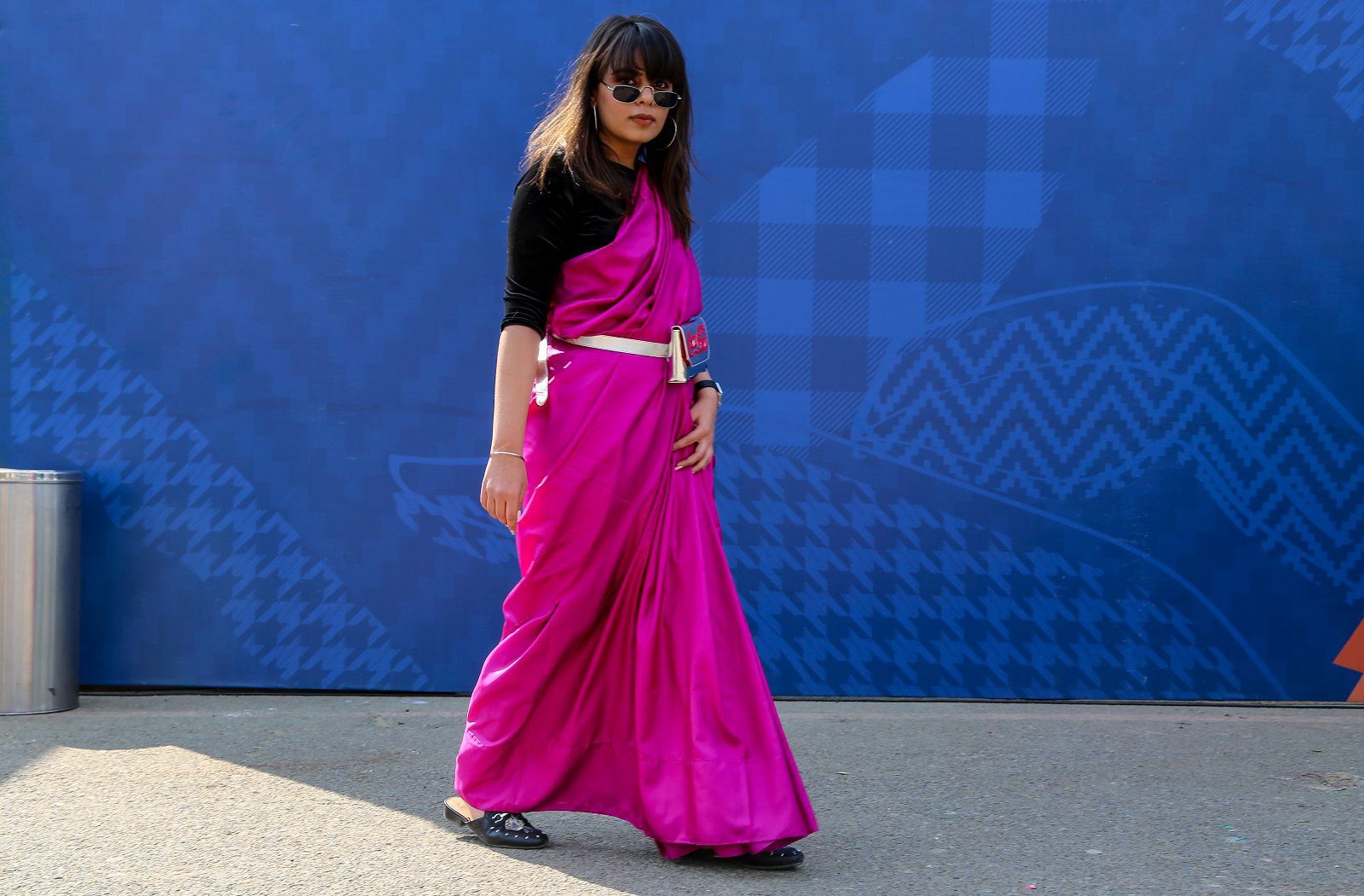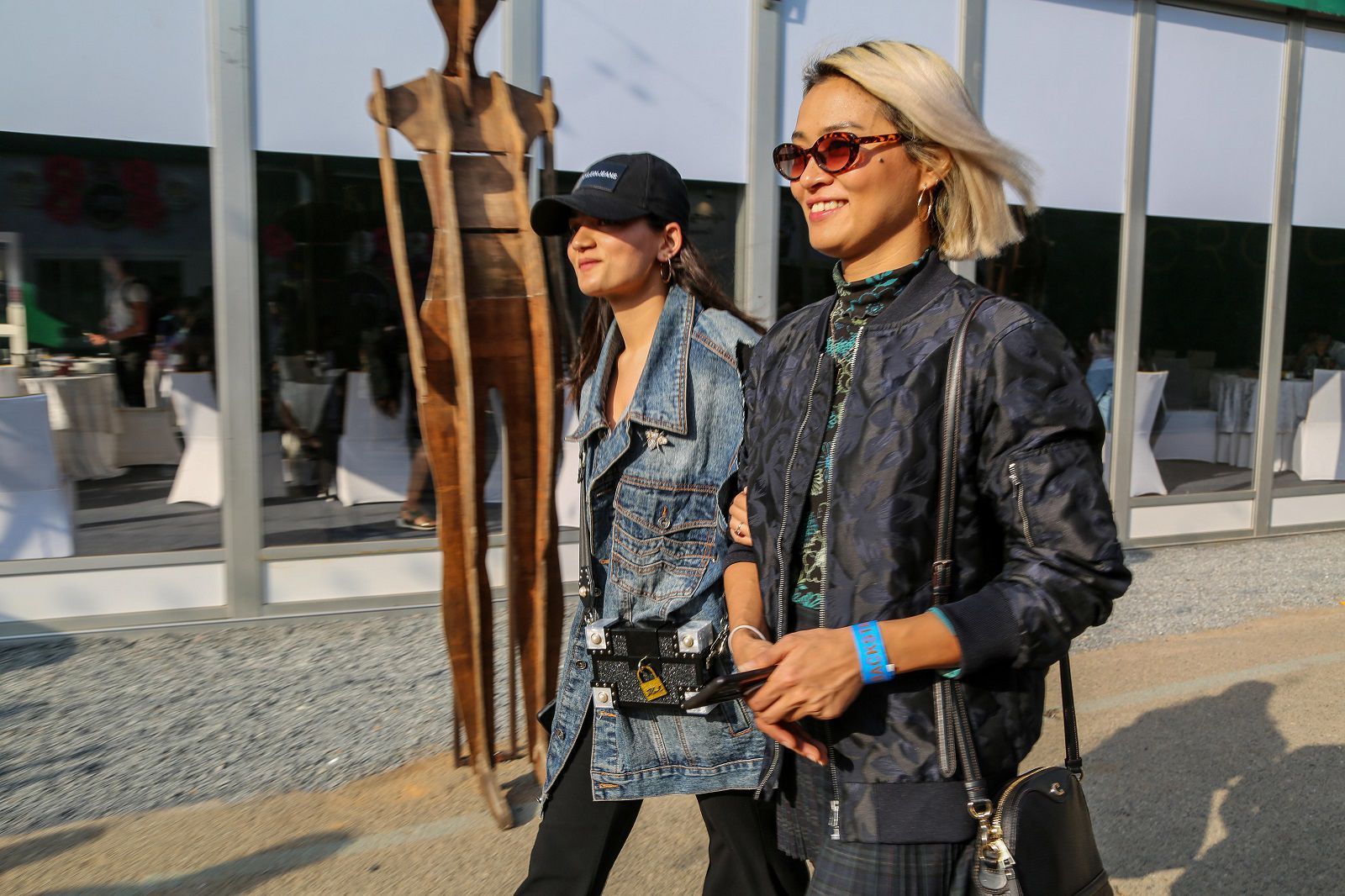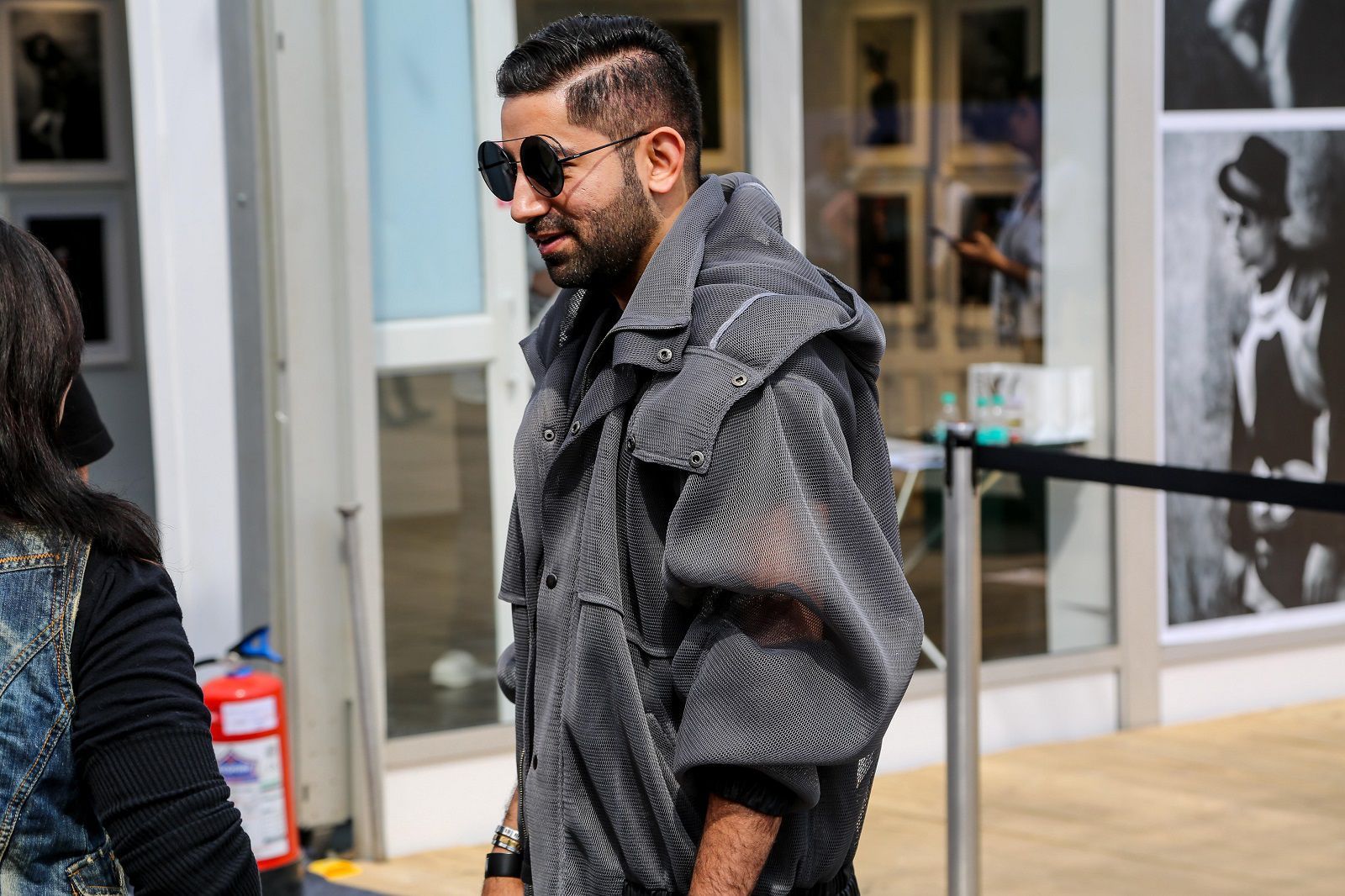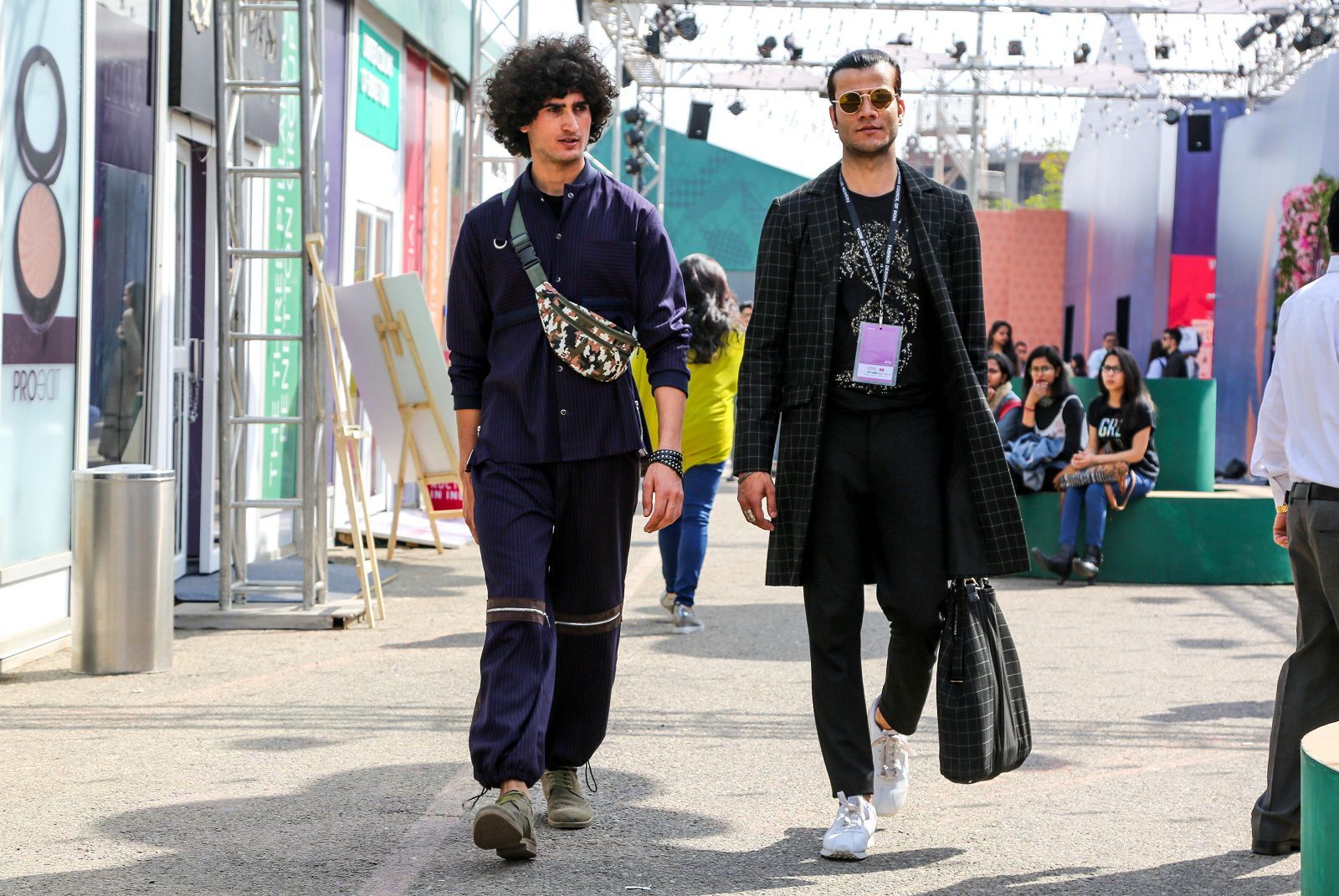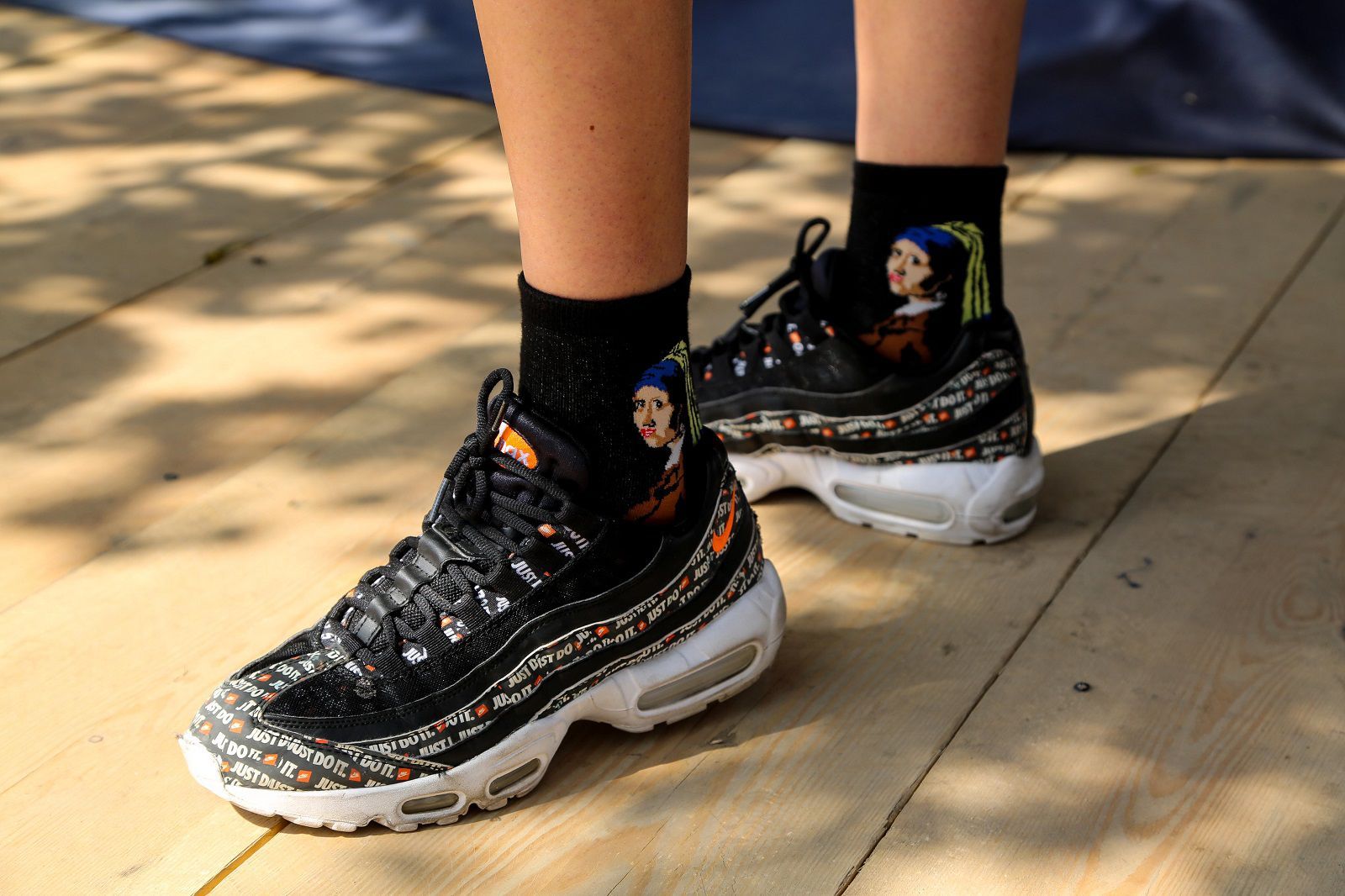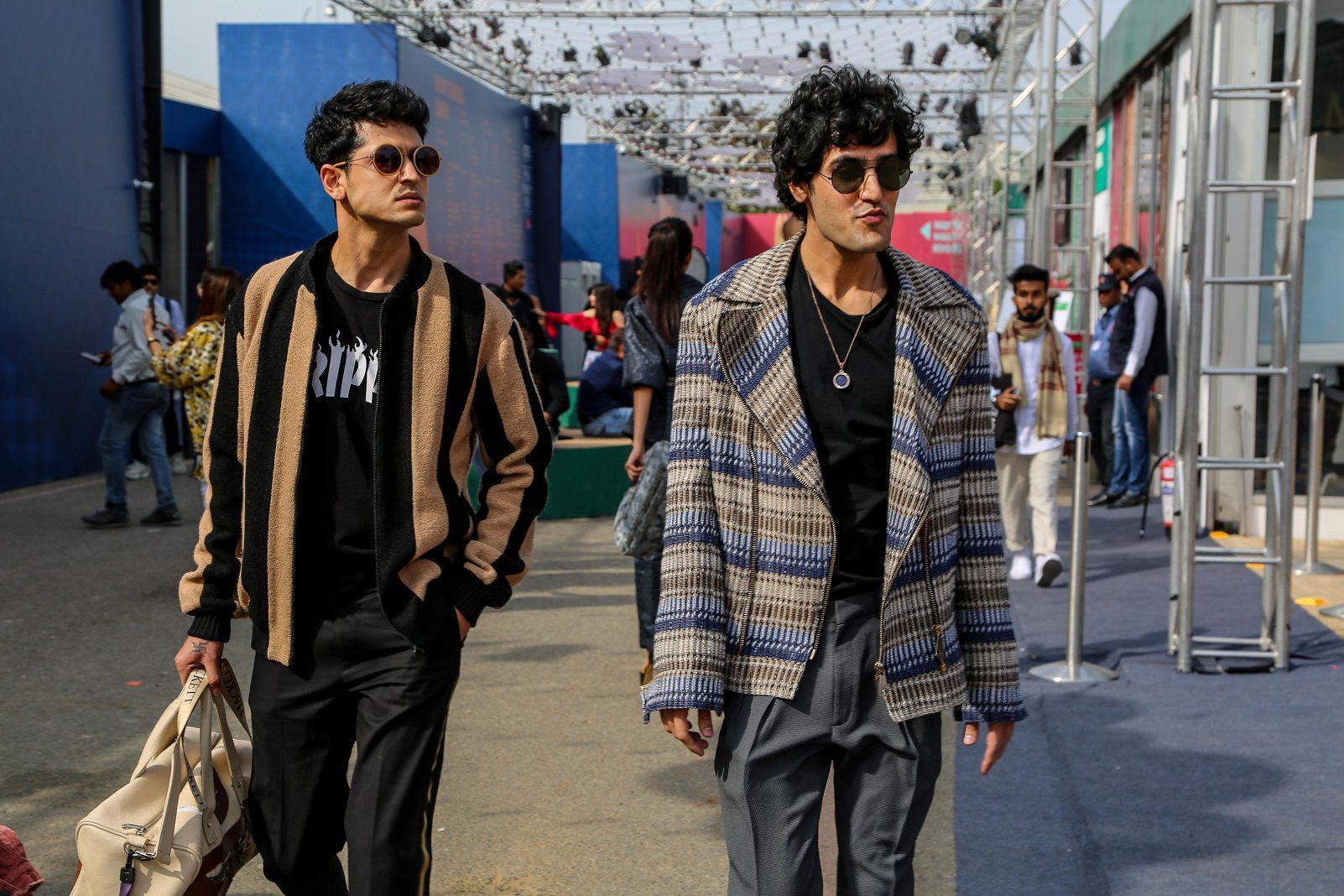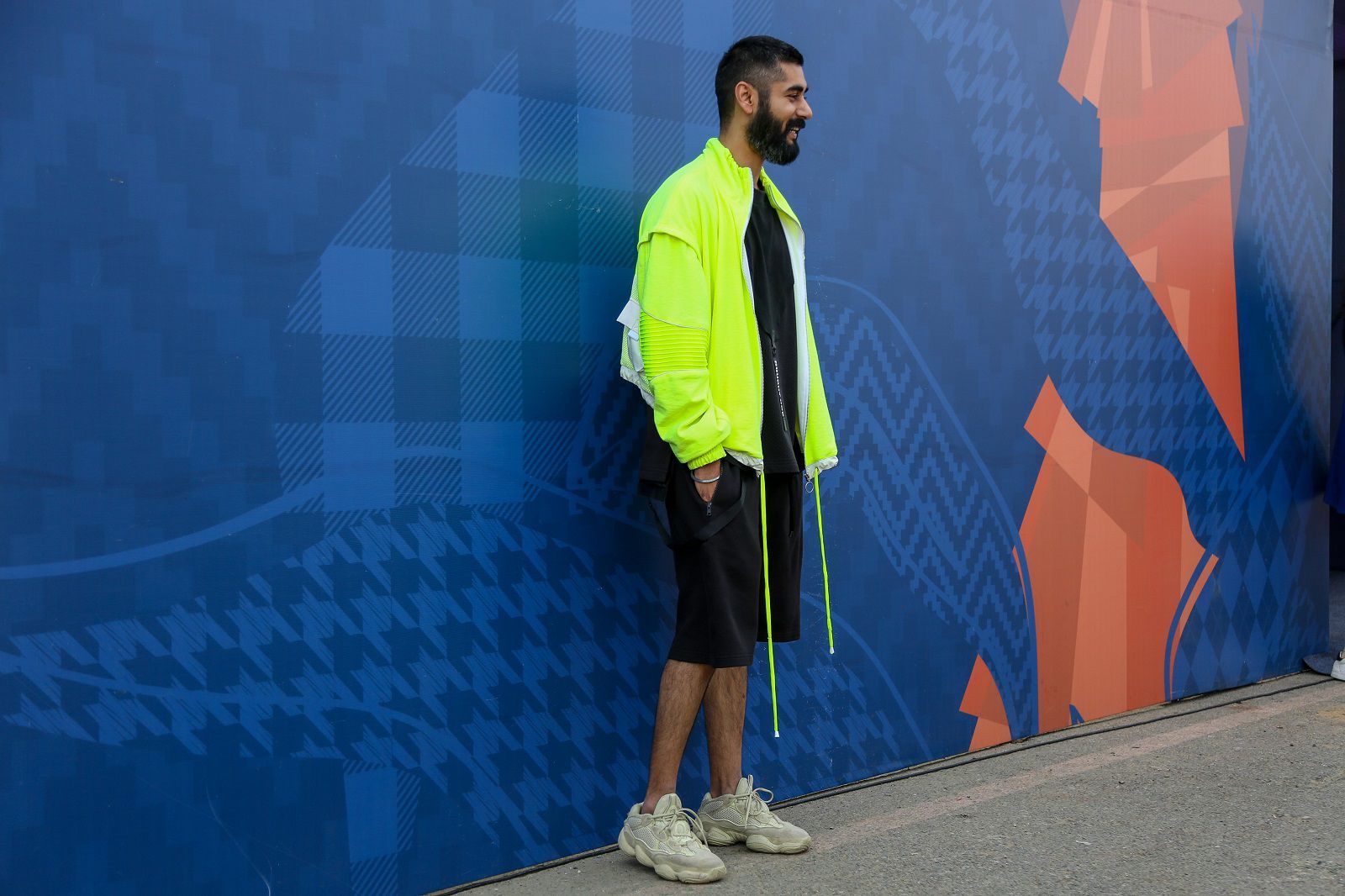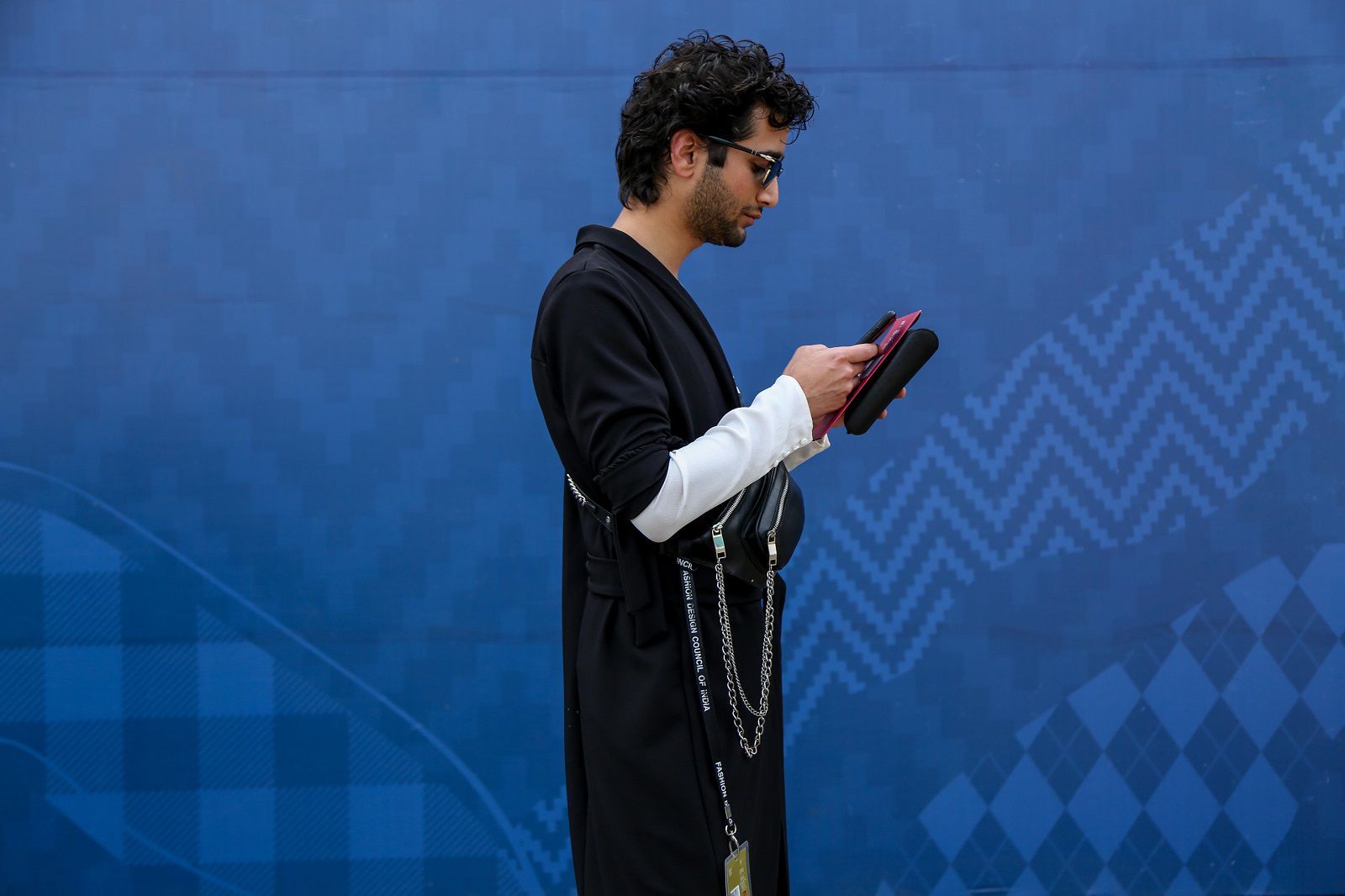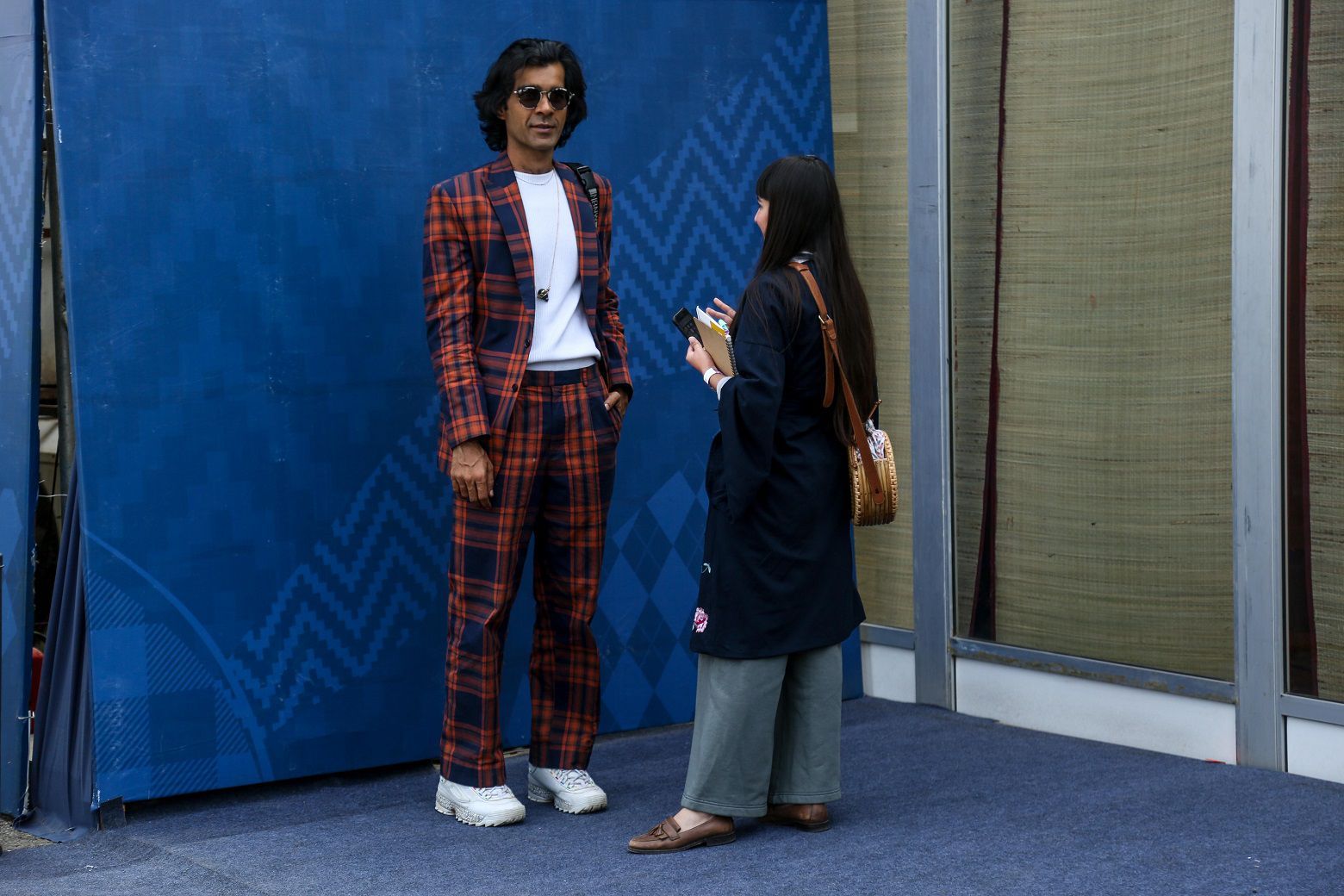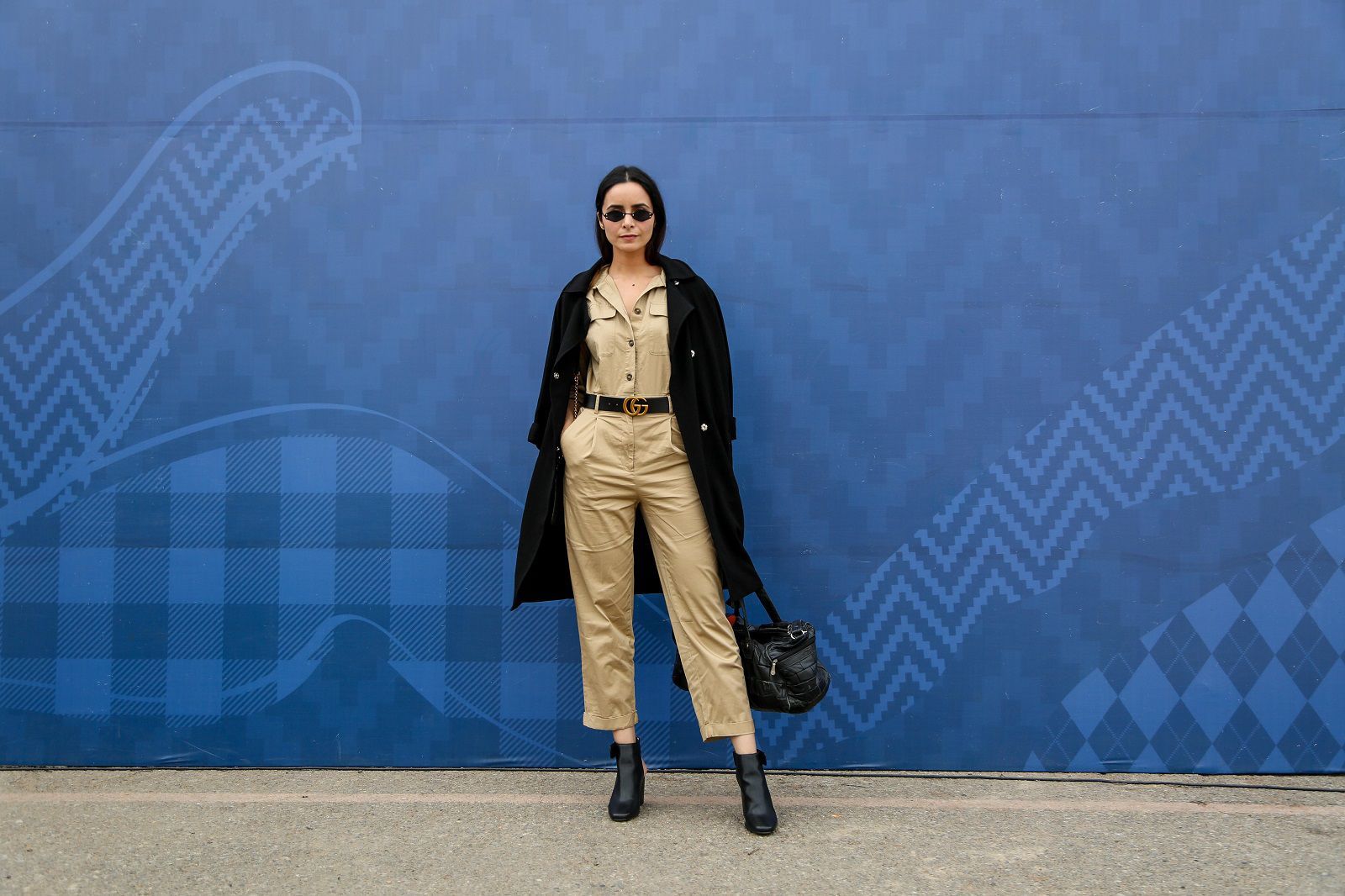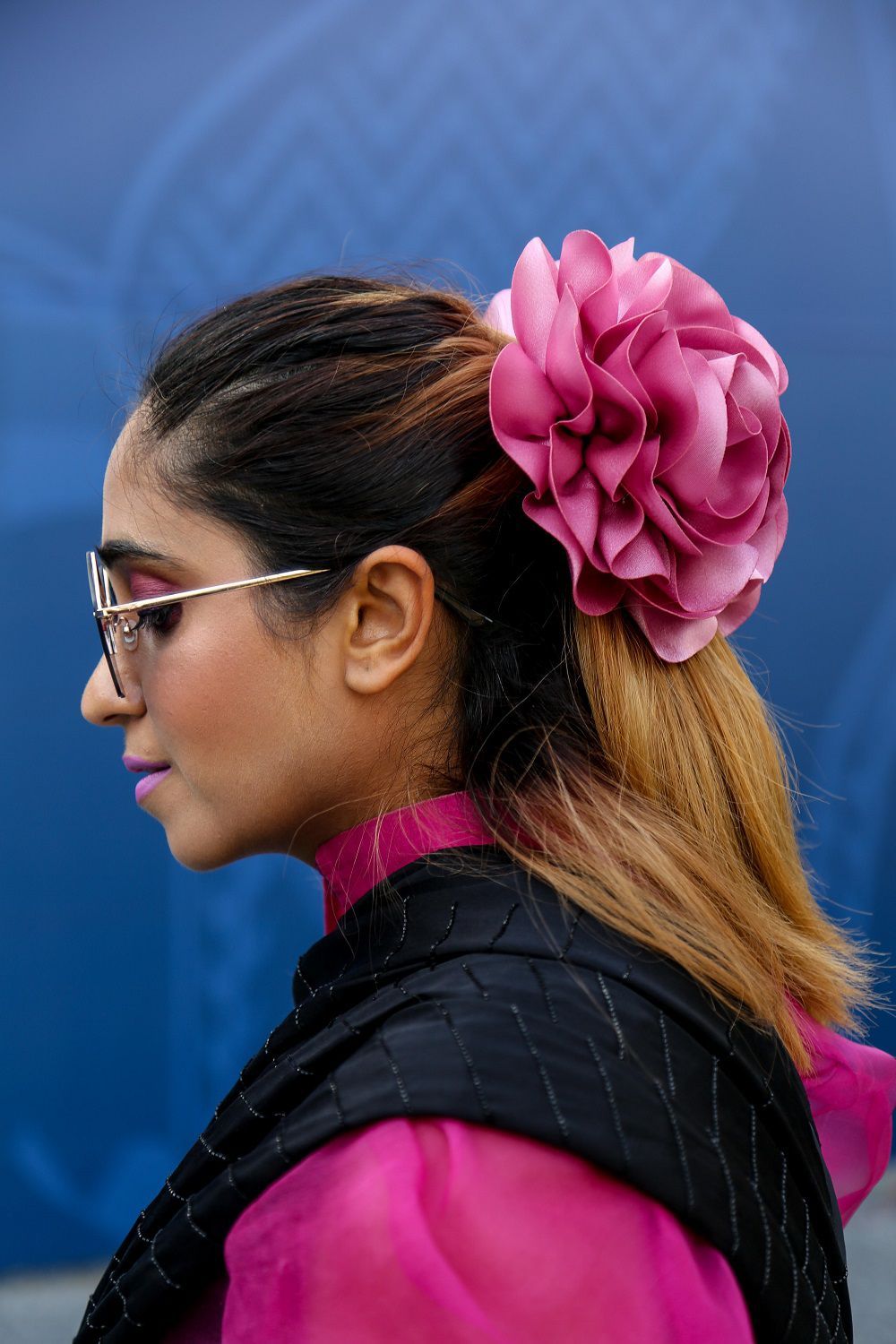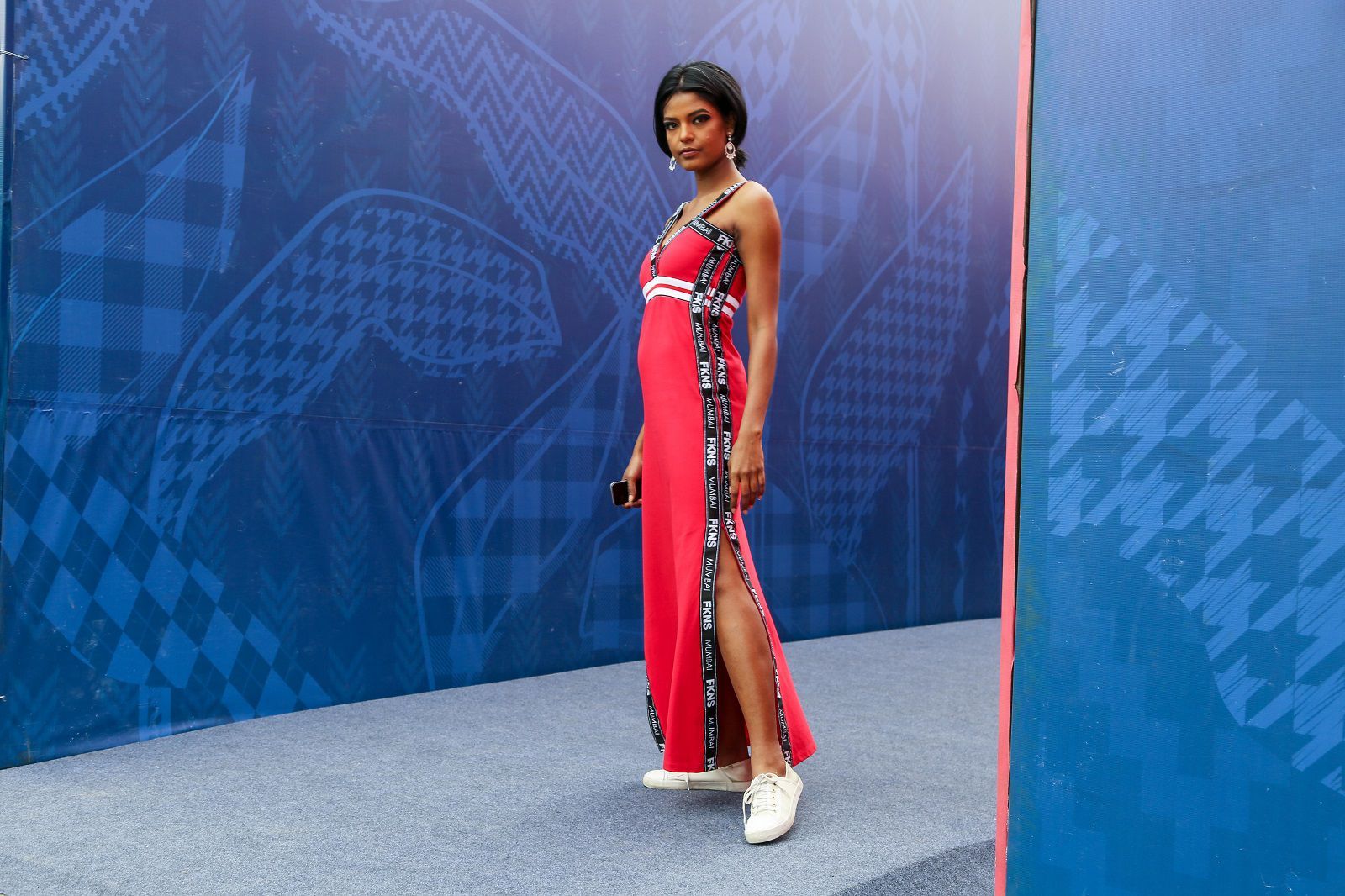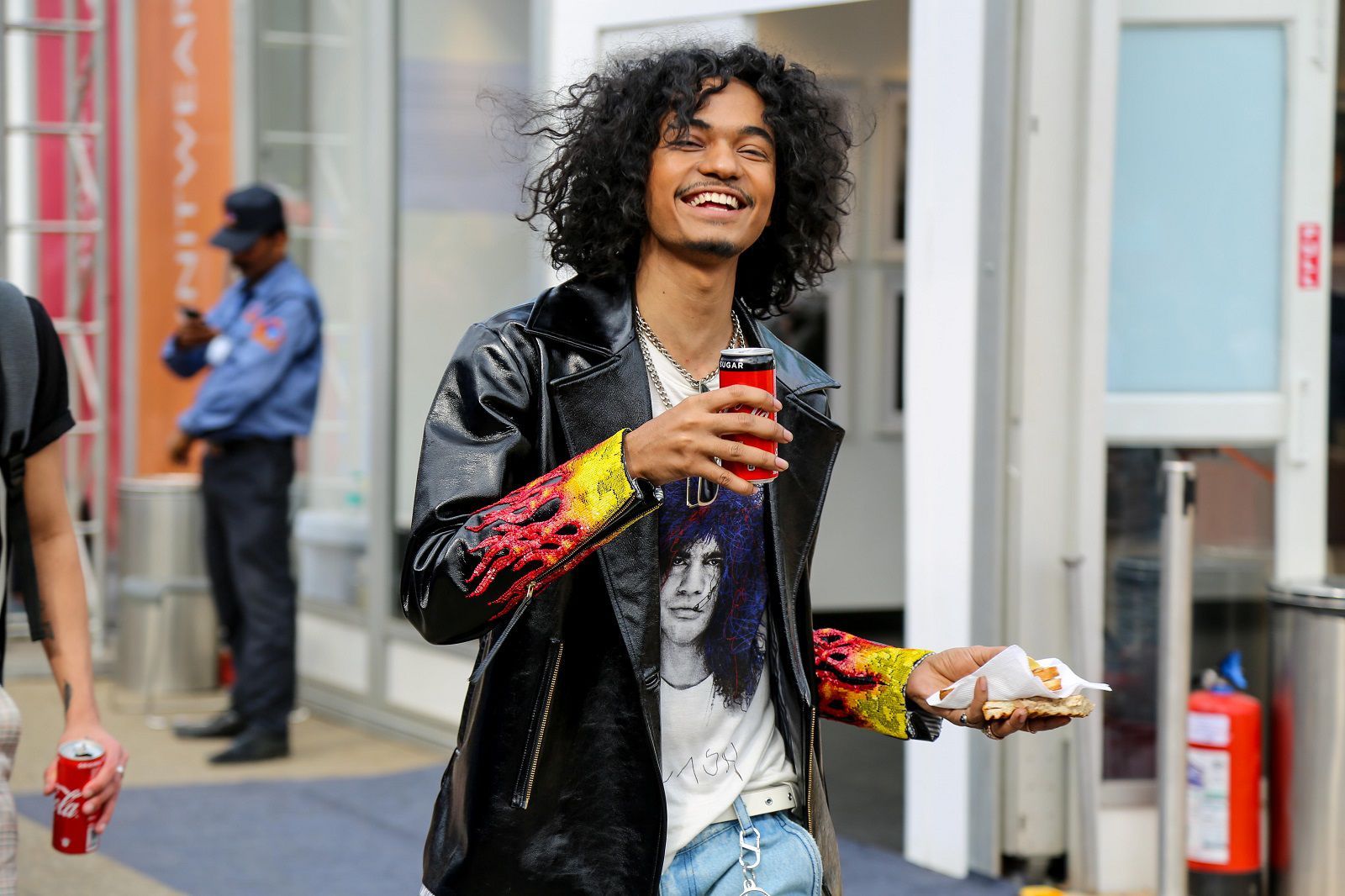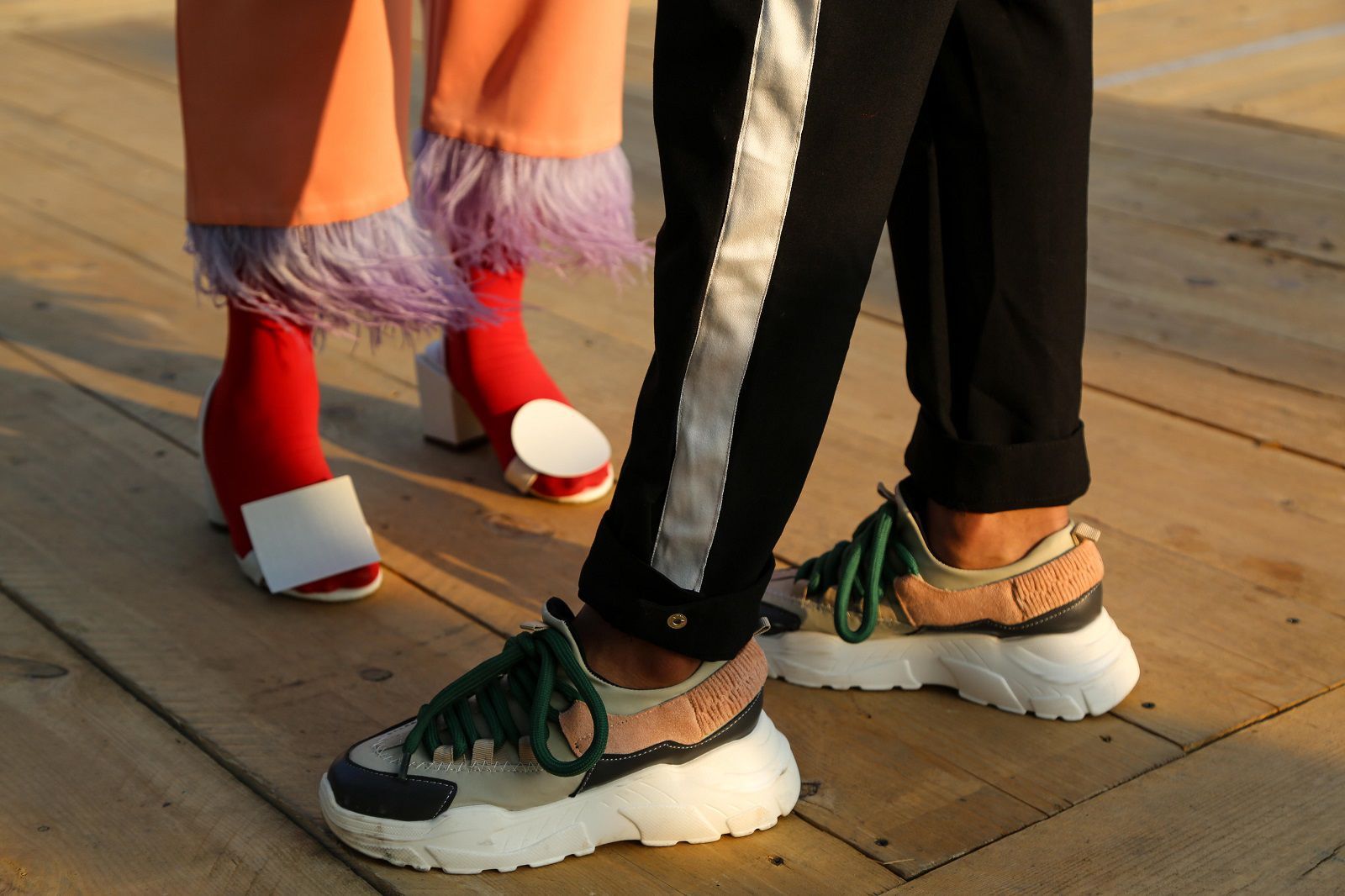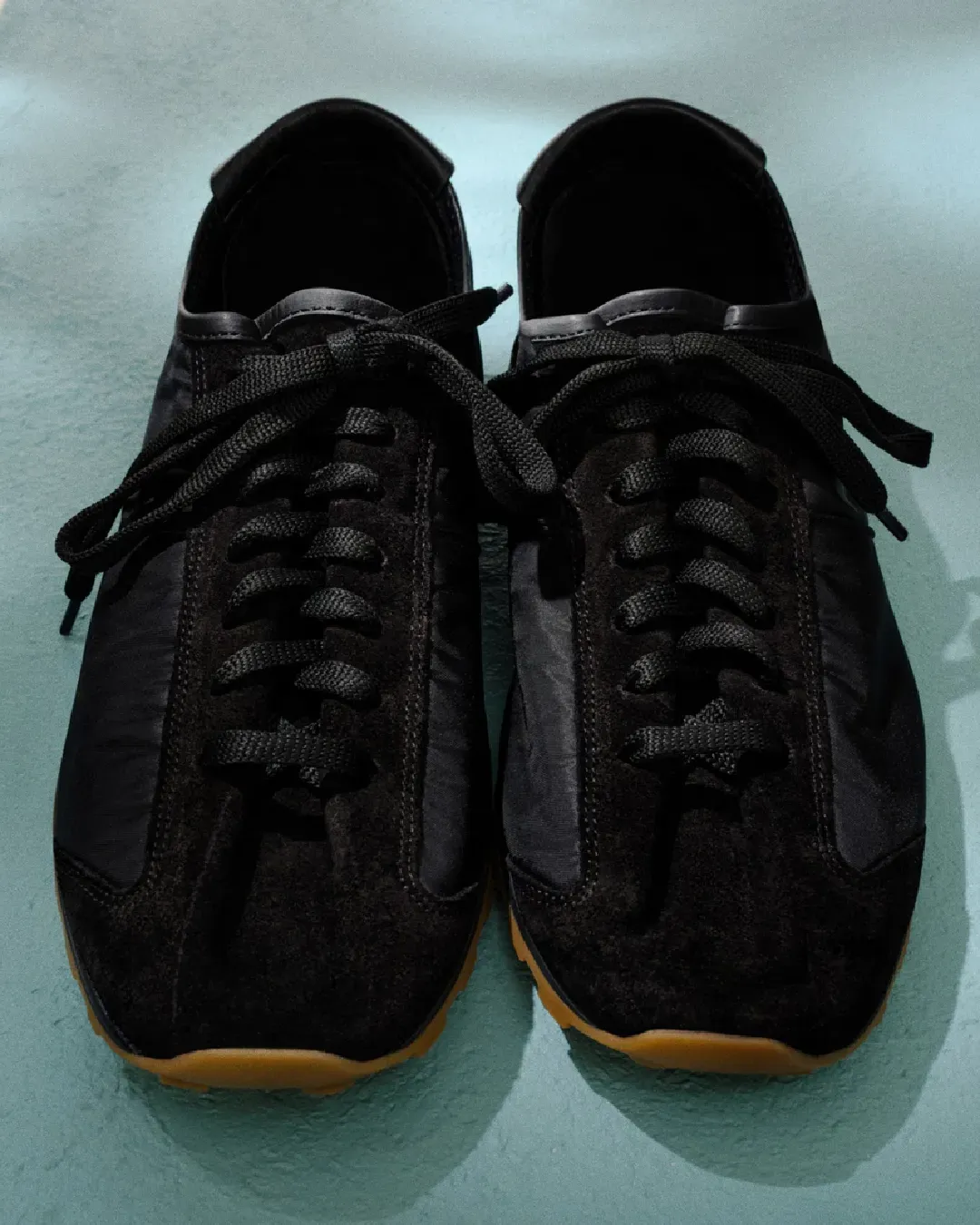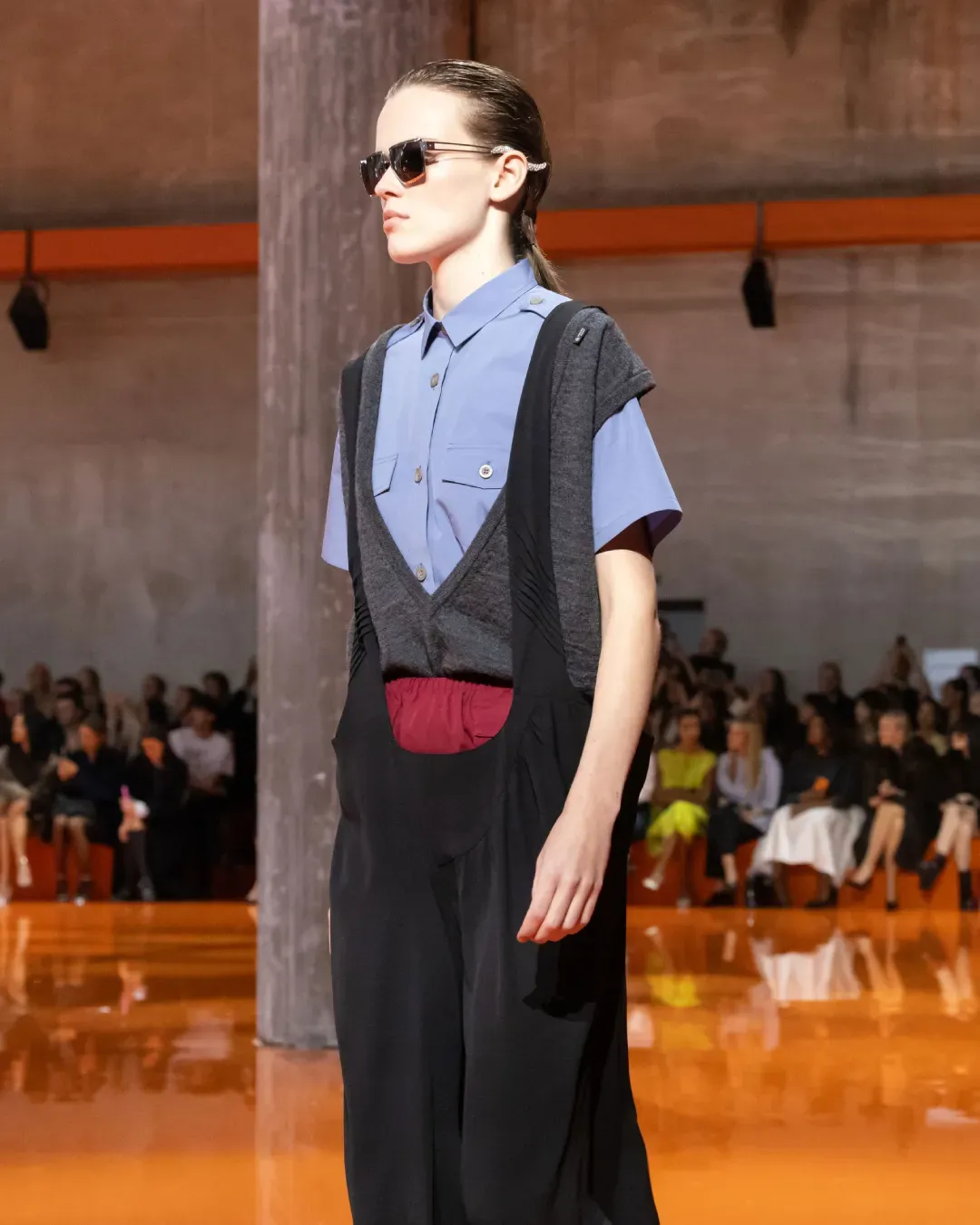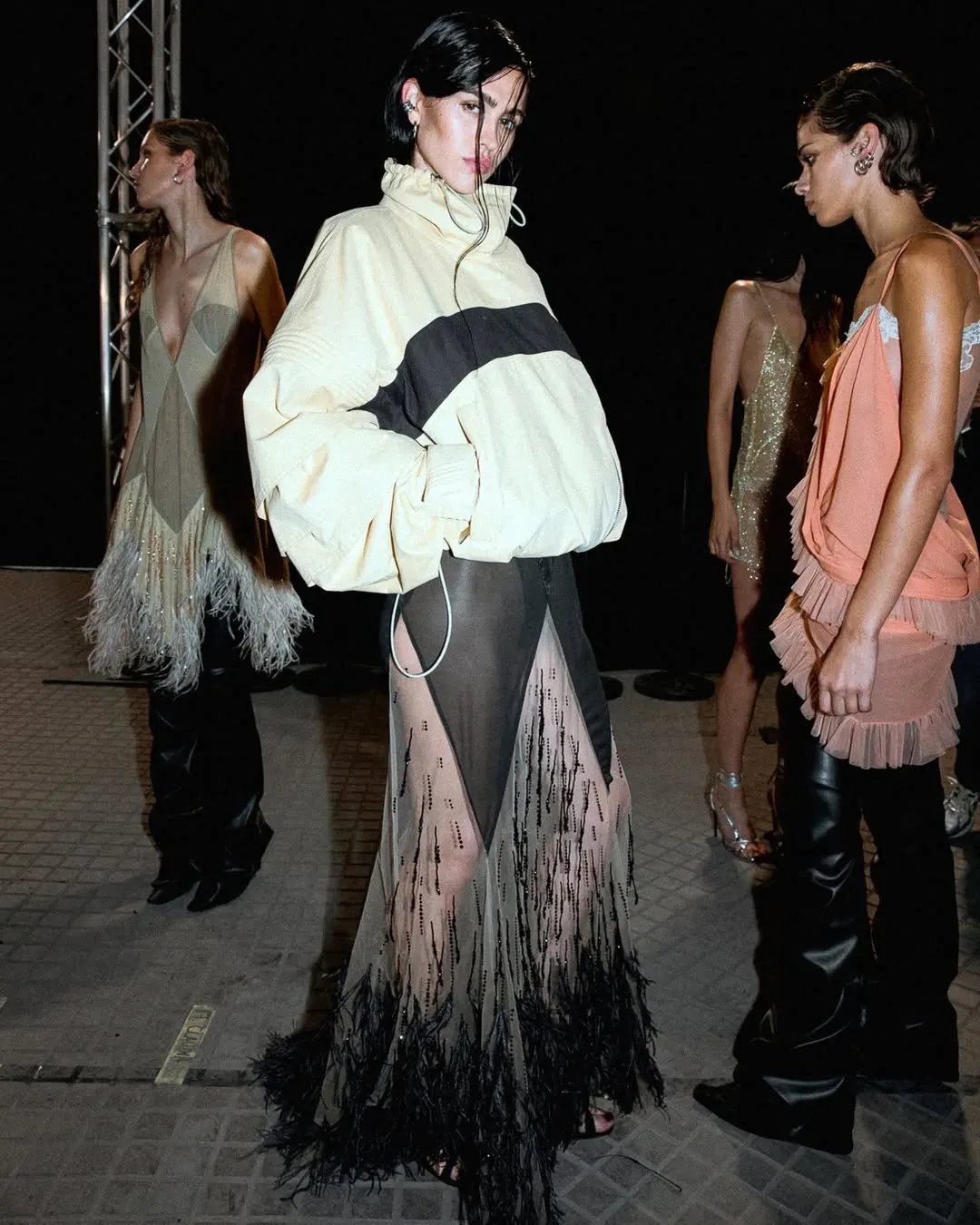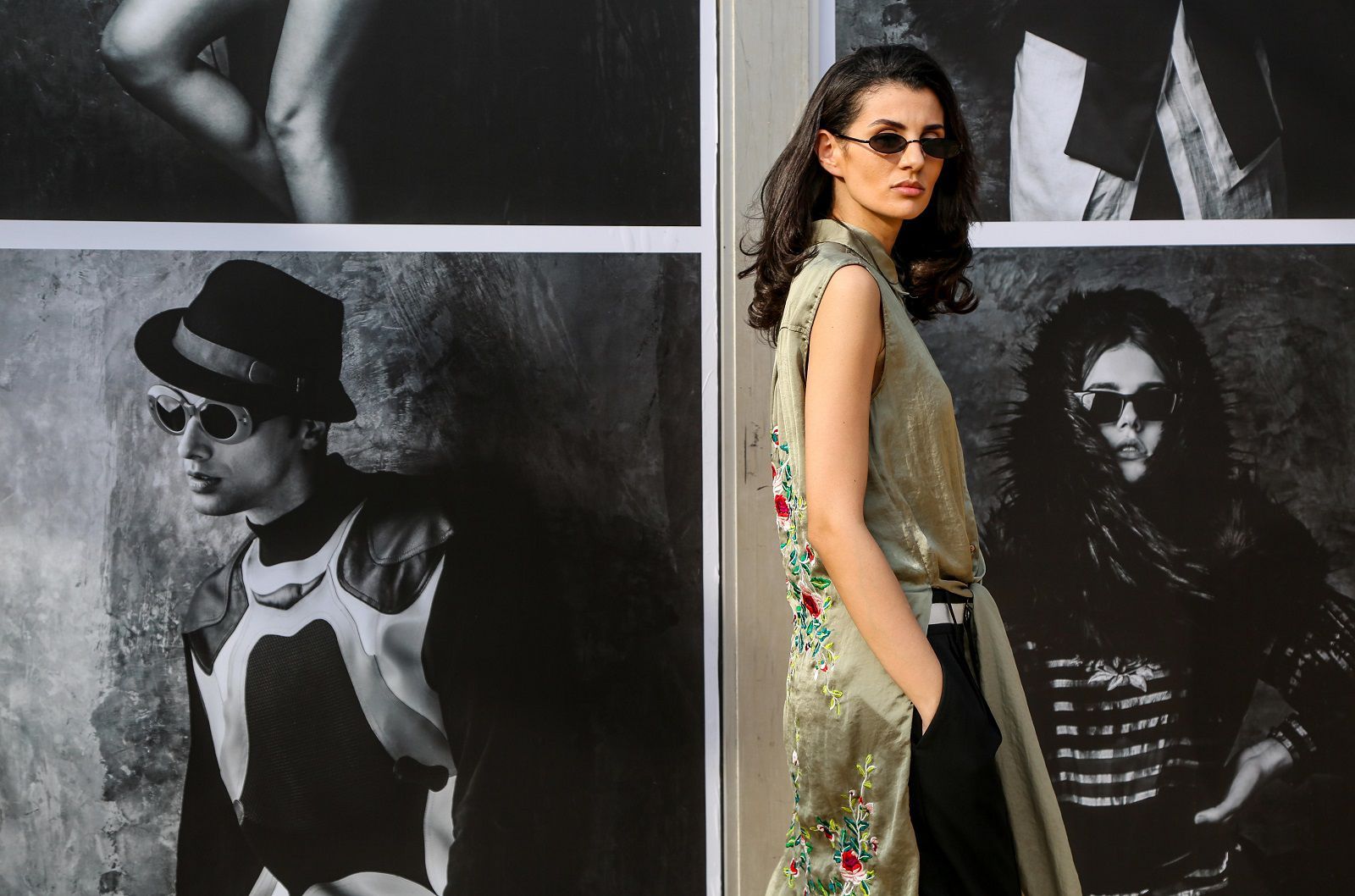
Where is Indian fashion going We asked streetstyle photographer of Lotus Make-up India Fashion Week in which direction this country is moving
The identity of nss magazine lies in the street style. From years we have been covering the so-called minor fashion weeks, to understand and map the trends that develop outside of the big 4 (Milan, New York, Paris and London) and then slowly enter the mainstream fashion. A few weeks ago we received the classic WeTransfer from Abhimanyu Rathore with photos from India Fashion Week, now better known as Lotus makeup India Fashion Week. Looking at the shots, carefully observing the looks and the mood of the fashion week, the peculiarity of the Indian fashion clearly emerges, totally distant from what we are used to seeing both at the big Fashion Weeks and in the smaller ones.
The originality of Indian Fashion Week, born in 2000 changing its name according to the sponsor, is in the link with the ancient and contemporary Indian culture. From Bollywood to traditional saris, it still seems to be in an embryonic stage - considering that the country is the second emerging market in the world behind China - but for this very reason it is still authentic and scarcely influenced by the global hype.
To better understand the identity and the future of Indian fashion, we interviewed Abhimanyu Rathore - blogger and street style photographer for Buzzfeed, Vogue India, Conde Nast Traveler - to understand the present and the future of the fashion made in India.
1. How has the Amazon India Fashion Week (now called Lotus Makeup India Fashion Week) changed in recent years? Which are the most popular brands, both national and international?
Designers are divided into two clearly , New Delhi based designers mostly participate in India Fashion week and Mumbai based designers participate in Lakme Fashion Week. In India Fashion Week the title sponsors have changed thrice (Wills, Amazon and now Lotus Makeup). The big designers who have also made it to international include Anamika Khanna, Rahul Mishra, Manish Arora and Hemant & Nandita.
2. It's easy to catch the different aesthetic and apparel compared to the "big 4" (NY, London, Paris and Milan). What is in your opinion the most clear differences and how the ‘bigger’ fashion weeks perceived in India?
The mainstream trends/forecasts are no longer followed as the major market still is of Indian ethnic wear and mostly bridals that's how designers make money here. Also Bollywood and celebrity culture plays a major role in dictating fashion here in India. The clear difference between fashion weeks in India and the "big 4" I feel in terms of collection is that in India it is still very much about the bridal fashion(bridemaids and bridal wear) which is mostly about indian ethnic wear which includes Sarees and Lehangas (skirt) that's why the collection range is very limited. Designers here do look upto the fashion trends aboard and try to juxtapose it with indian wear most of the times, like these days they are focusing on destination weddings so the collection includes indo-western details also the silhouettes ranges from sarees to bikinis. Also the trends, colors and moods here are still very much defined by the Bollywood (movies and Bollywood celebrities at parties, events, red carpets and most importantly celebrity outfits at the wedding events) very few designers here actually follow the trend forecasts. Also designers here always try to pick up some elements from west like more and more designers are focusing on gender fluid outfits, also now designers like Huemn, Nought One are making street wear look cool on the runway, also the major differrence I see is also about casting unconventional models for the fashion shows which includes androgynous models and also real models with real sizes.
3. How much do tradition and religious influence the trends?
India is known for it's diversity we have 22 major languages. Also most of the time people are shopping for the festivals and we have festivals almost every month. So for designers and brands it's the easiest way to target the audience during those festivals and keeping the collection relevant to that. We have four major religions here Hindu, Muslim, Sikh and Christianity (Hindu and muslim in majority) . Designers are taking lot of inspirations from the past history and costumes of Gods and goddesses , also bridal wear are hugely inspired by the Royalty, even the major designers like Tarun Tahiliani, JJ Vallaya and Sabyasachi shoots their look books in the same manner as of vintage portraits of Royal families in India , particularly like the portraits of royal families of Rajasthan.
4. Regarding the rise of the streetwear and sneaker, how is Indian fashionistas tackling the trends?
It all started with influencers of instagram, back in the time during 2015 we had very few instagram influerencers in india so International Instagram stars and Pop stars played big role in terms of inspiration. Later on Bollywood celebrities were seen snapped at the airports in athleisure mostly featuring Internationals brands like Balenciaga and Gucci. Before that the airport looks were not that photographed and followed but it later on became a major source of inspiration for Indian fashionistas. Also indian designer labels like Huemn and Dhruv Kapoor made the sporty chic popular among indian audience. And currently Bollywood movie Gully Boy (which is loosely based upon life of a rapper from Slums who made it big) is serving huge role in making streetwear as household fashion trend.
5. What are the most influential Italian brands in India?
FILA and Gucci are very popular among youngsters. Dolce and Gabbana, Versace and Armani are constant as the symbol of high society in New Delhi from very long time.
6. What's the future of the fashion in India?
I feel India is following the league and now is moving forward responsible fashion. Designers and exhibitors are more focusing towards slow fashion and sustainability. Brands and design houses like Pero by Aneeth Arora, Bhane, Abraham and Thakore, Akaaro, Urvashi Kaur are doing good business proves that how it is working out here in this deparment.










































